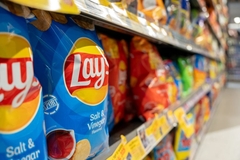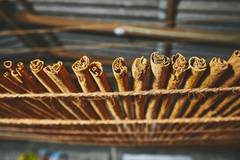Suspicious spice: Report reveals significant fraud in cinnamon sold in EU
Key takeaways
- Over 66% of cinnamon samples sold in EU markets failed quality or safety standards, with some mislabeled or containing toxic levels of coumarin.
- Nearly 10% of products labeled as Ceylon cinnamon were actually Cassia or a mix, contributing to consumer deception.
- Several samples exceeded legal lead limits and coumarin levels, posing potential health risks, especially to children.
A new report has flagged a significant volume of fraud cases and non-compliance with the food safety legislation in cinnamon sold at EU retailers.
The Joint Research Centre EU Science Hub (JRC) investigation reveals that cinnamon fraud is rife. More than 66% of the 104 samples analyzed failed to meet international quality standards, were non-compliant with EU food safety legislation, suspected of fraud, and/or potentially exceeded the legal coumarin limits.
JRC’s findings will help the scientific community and policymakers set threshold values for the different cinnamon components and define when to consider a sample suspicious.
Fraud in the herbs and spices sector
Ceylon cinnamon (Cinnamomum verum or Cinnamomum zeylanicum Blume), native to Sri Lanka, and Cassia (Cinnamomum cassia or Cinnamomum aromaticum), native to Myanmar, are the two main botanical types of cinnamon.
Cassia is a cheaper and lower quality alternative with stronger taste, which naturally contains coumarin — a natural aromatic compound found in cassia and other plants, which is potentially toxic to the liver.
JRC scientists used four innovative in-house screening methods.
The investigation found that 9% of the samples labeled as Ceylon cinnamon were totally or partially substituted by Cassia cinnamon, and that both types may often be labeled as just “cinnamon,” which can lead to confusion.

Meanwhile, 21% of the samples failed to meet international standards due to a high total ash content, and 9.6 % did not comply with the maximum limit of 2 mg kg-1 set for lead by European food safety legislation. Moreover, the report warns that 31 of the analyzed samples were potentially hazardous for children due to a high coumarin content.
“The high rate of irregular cinnamon samples in the European market indicates that attention should be paid to the situation by all stakeholders in the sector, policymakers, control laboratories, and manufacturers alike,” says the JRC.
The cinnamon fraud findings closely follow similar issues in the olive oil sector, where counterfeit challenges are rife, while the global honey industry is grappling with widespread fraud and tampering concerns.
















